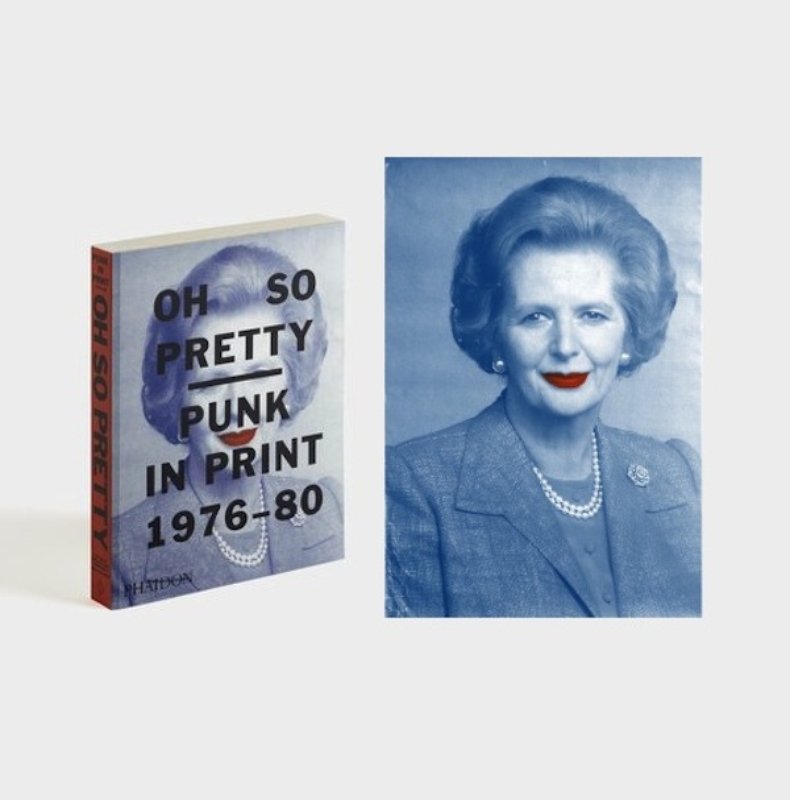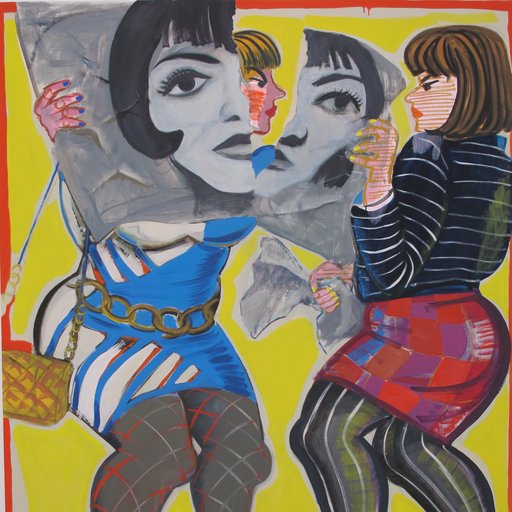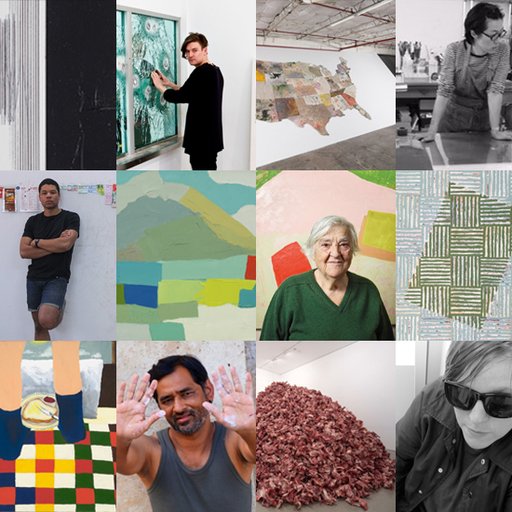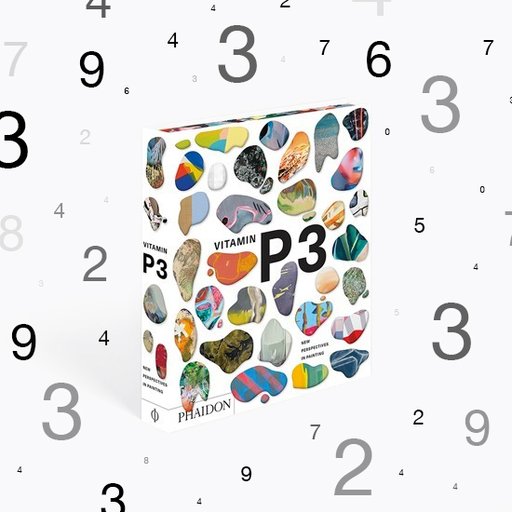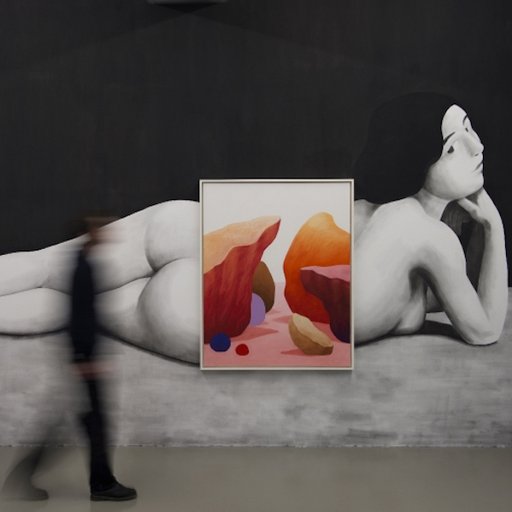Despite the claims to the contrary, the musical genre turned youth subculture we now call “punk” is certainly dead—though its heyday may well be over. The style and energy of punk have seeped into the mainstream everywhere from music and literature to fashion and art, much to the chagrin of its early adherents.
In this excerpt from Phaidon’s new title Oh So Pretty: Punk in Print 1976-80 , we explore the social history of this anti-authoritarian movement through the materials it left behind: prints, posters, zines, and album covers. These diffuse bits of ephemera, now almost impossible to find in their original forms, speak to the centrality of late 1970s politics and popular culture (not to mention the Xerox machine) to the rise of punk rock.
Click here to buy the book for yourself, and here to find out more about out special bundle offer with an exclusive print from the book—don't worry, we won't tell any of your anti-establishment friends.
SNIFFIN’ GLUE #3½
Mark Perry
1976
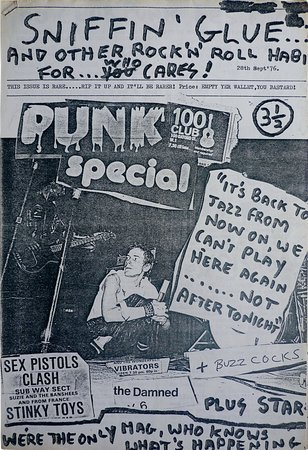
In July 1976, a few days after seeing American punk band the Ramones in London at the Roundhouse, 19-year-old Mark Perry produced issue #1 of Sniffin’ Glue , the first punk fanzine. Perry took the title from the Ramones’ song “Now I Wanna Sniff Some Glue”, and wrote reviews of the Ramones, Blue Öyster Cult, and other bands.
In the April 2002 issue of Q magazine, Perry recalled, “The whole of that first issue was what I could do at that time with what I had in my bedroom. I had a children’s typewriter plus a felt-tip pen, so that’s why the first issue is how it is. I just thought it would be a one-off. I knew when I took it to the shop there was a good chance they’d laugh at me, but instead they said, ‘How many have you got?’ I think my girlfriend had done twenty on the photocopier at her work and they bought the lot off me. Then they advanced me some money to get more printed.”
Perry would go on to produce 14 issues of this quintessential document of the punk movement.
POSTER FOR NEW WAVE COMPILATION ALBUM (VERTIGO)
1977

The compilation includes the Ramones, Dead Boys, Patti Smith, New York Dolls, the Runaways, Skyhooks, the Voidoids, Little Bob Story, the Boomtown Rats, Talking Heads, the Damned, and the Flamin’ Groovies. The sleeve and poster both feature a photo of the Satellites’ vocalist Derek Gibbs spitting beer with bass player John Johnson in a swimming cap in the background. The album helped establish the musical term “new wave” and affirmed the importance of these participating bands in that movement.
POSTER FOR THE SEX PISTOLS’ SINGLE “GOD SAVE THE QUEEN”
Jamie Reid
1977

The image of Queen Elizabeth II covered in Jamie Reid’s ransom-note lettering is perhaps the best-known Pistols artwork. The original photograph is an official 1977 Silver Jubilee portrait by Royal photographer Peter Grugeon. Reid created two versions: the one seen here, with the band’s name over the Queen’s face, and another with swastikas over the Queen’s eyes and a safety pin through her lips.
In 1970 Reid had co-founded Suburban Press , which developed into a political forum for Situationist slogans and allegations of local corruption. There he honed the unique style he would later employ for punk graphics, which used photocopiers with saturated colors, litho reproduction, and unconventional typography. Reid created many images for the Sex Pistols, including the cover for Never Mind the Bollocks, Here’s the Sex Pistols .
ANTI-NAZI LEAGUE
Late 1970s

Unemployment and race were politically charged issues in the 1970s. The Anti-Nazi League argued that blame for high levels of unemployment should be laid at the feet of the “bosses, bankers, judges, and police chiefs” rather than racial minorities in the country.
FLYER FOR CHELSEA, THE CORTINAS, THE LURKERS, AND SHAM 69 AT ACKLAM HALL, LONDON
1977

Acklam Hall, located off Portobello Road, was popular amongst post-punk bands. In 1979, journalist Chris Westwood told the Record Mirror, “The Acklam Hall stinks. Like some scummy old school hall, it lacks atmosphere, facilities, everything. Ironically, it remains one of the solitary few places in the big city where crowds of little known quality bands can assemble and present their ideas to open-minded punters.” By the summer of 1977, bands like Chelsea and Sham 69 were attracting a following of skinheads.
POSTER PROGRAM FOR IAN DURY & THE BLOCKHEADS
Barney Bubbles
1977

Ian Dury & the Blockheads quickly gained a reputation as one of the best live acts to emerge from the new wave. When it released, their first single “Sex and Drugs and Rock ’n’ Roll” was both banned by the BBC and named Single of the Week by NME .
BOY POSTER, “THE STRENGTH OF THE COUNTRY LIES IN ITS YOUTH”
Peter Christopherson
1978

It was in March 1977 that John Krivine, with Stephane Raynor, opened the vintage clothing store BOY as an offshoot of Acme Attractions, which sold pinball machines and antique furniture. They began selling their own designs in competition with Vivienne Westwood and Malcolm McLaren’s Seditionaries. Don Letts briefly managed the shop before going on to manage the Slits. The BOY brand caught on in the ’80s. Confrontational from the outset, BOY’s interior was designed to appear vandalized and burned-out; the disturbing window displays attracted violence and the glass was regularly shattered during the summer’s street fighting.
This offset-litho poster, designed by Peter Christopherson, advertises the punk fashion shop using a photograph of a boy with a bloodied head lying in the street, two bootshod youths standing over him. Some 200 posters were produced. According to John Krivine, “the boy on the ground is John Hareward (Little John), and the quote is [John and Peter’s]. I wasn’t even consulted—I wouldn’t have commissioned a poster: There was no money for a poster, and what do I do with a poster? I was shocked at the quote. The photo was fine, but the words were very deco, very 1930s. It was like a cheeky gift from them to me.”
IN THE GUTTER
Val Hennessy
1978

This London publication surveys punk fashion and so-called primitive dress. Val Hennessy, a Fleet Street journalist, had limited experience with her subject and produced the book while creating a television program about punk.
POSTER FOR ROCK AGAINST RACISM CARNIVAL, VICTORIA PARK
David King
1978

Rock Against Racism was founded in 1976 by Red Saunders, Roger Huddle, and others, partly in response to the rise of white nationalist organizations coupled with several incidents where well-known musicians appeared to support right-wing causes. At a 1976 concert in Birmingham, Eric Clapton declared support for Conservative MP Enoch Powell and repeated the National Front slogan “Keep Britain White”; David Bowie made pro-fascist statements in interviews. RAR frequently teamed up with organizations such as the Anti-Nazi League.
RAR’s 1978 carnival was heavily publicized by both the political left and the music press. The event began with a march to Victoria Park, where the Clash, Tom Robinson, Steel Pulse, X-Ray Spex, and others played to an audience of more than 80,000. Organizer Richard Buckwell remembers being “flabbergasted” by the size of the event: “We expected 10,000 or 20,000 people.”
The poster was printed before the bill was finalized and did not mention that the Clash or Patrik Fitzgerald would play.
JOHN COOPER CLARKE
Barney Bubbles
1979

In this book by English performance poet John Cooper Clarke, 12 poems accompany photographs by Kevin Cummins, Tom Sheehan and Paul Slattery. Clarke opened for major punk and new wave acts, including the Sex Pistols, Joy Division, Siouxsie and the Banshees, and Elvis Costello.
[related-works-module]












